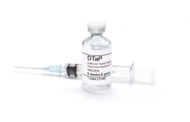Blocked tear ducts are common in babies, affecting up to 5-6% of all infants. It can be a nuisance, but it is benign and almost always goes away by itself without any treatment. It is presen... Read more
Cradle cap is an extremely common condition in infants. It usually starts around 2-6 weeks old and lasts a few months. It usually resolves by 6 months of age but may last up to a year. It is... Read more
Let’s take a look at your baby, from head to toe. This will answer a lot of your questions about what is normal and how to care for your baby. Skin Your baby has been developing and li... Read more
What should you expect at the hospital? What is going to happen to your baby? What do you need to know? Read on and find out! During your initial registration process, they will ask you w... Read more
Boy, there sure is a lot to do and think about, isn’t there? From the standpoint of your baby’s health, there are a few things to consider before the baby is born. Don’t worry; if you have a... Read more
Enteroviruses are a common cause of human disease, especially in children. There are a number of members of this family of viruses. As the name enteric implies, the primary site of infection... Read more
Swimmer’s ear is a form of otitis externa (external ear infection). It is a painful bacterial infection of the skin inside the ear canal. Swimming is by far the most common cause in children... Read more
Many people, including children, suffer from seasonal allergies, also known as hay fever. Seasonal allergies are typically worse in the spring and fall when certain pollens and other outdoor... Read more
Breast feeding is, obviously, very natural and the way mom’s and baby’s bodies were made; however, this does not mean that it is always easy, especially the first time you do it!... Read more
Breastfeeding is by far the best nutrition a baby can receive; there is almost no comparison between breastmilk and formula. While formula can help a baby survive and be healthy when breastm... Read more
Sometimes, the foods a mom is eating can make a baby fussy or have symptoms of colic. Though there is not a lot of science behind the practice, many babies seem to be less fussy when the mo... Read more
Any trip to the drugstore shows an enormous number of cough and cold medicines. By one count, there are over 800 different products. How can you make sense of this? When you understand the d... Read more
The hepatitis A vaccine has been used for years in high-risk areas such as Western states and in children and adults traveling overseas where hepatitis A is very common. In October, 2005 the... Read more
Rotavirus is a very common stomach virus that infects almost all infants and toddlers at some point. It causes severe vomiting and diarrhea for 1-2 weeks and is a leading cause of death in c... Read more
Along with back-to-school time comes the fall allergy season. Many people, including children, suffer from seasonal allergies, also known as hay fever. Seasonal allergies are typically worse... Read more
Human papillomavirus (HPV) is a sexually transmitted virus that causes genital warts in men and women. It has been known for years that virtually all cases of cervical cancer are caused by t... Read more
Every summer children enjoy the warm weather by swimming and doing other outside water activities. Unfortunately, drowning is a leading cause of death in children. Children can drown in any... Read more
Bone health is an important topic in children, of course, because we all want them to have strong, healthy bones.But to be honest, it is not that significant an issue in children, although r... Read more
Confused about car seats and booster seats? They can be quite confusing! Both the rules about ages and kind of seats and which direction to face can be confusing, and so can installing and u... Read more
How long can expressed or pumped breast milk be safely stored? Here are some guidelines. Room Temperature Fresh milk 4-8 hours Thawed milk 1-4 hours Refrigerator Fresh milk 3-5 days Thawed m... Read more
For many children, the holiday season means, among other things, toys. It is an exciting time for children and for parents as well. And toys are not only fun, but can be educational and can... Read more
Cold and flu season is here! During the late fall and winter months, we see a dramatic rise in the number of people, both children and adults, with colds or upper respiratory infections. The... Read more
The MMRV vaccine is a combination of the MMR (Measles-Mumps-Rubella) vaccine and the Varicella (chickenpox) vaccine. Both vaccines are made by the same company and are unchanged in their co... Read more
The Tdap vaccine is a booster for pertussis (whooping cough), tetanus, and diphtheria given to all adolescents and to adults caring for a newborn baby, including pregnant women with each pre... Read more
Summer is a great time for outdoor play, sports and activities. Unfortunately, outdoor activities can sometimes lead to injuries. Here are some tips to help keep kids safe this summer. Pool... Read more
The Td vaccine is the adult tetanus booster vaccine; it contains a small amount of diphtheria vaccine and is a booster for diphtheria as well. The primary tetanus and diphtheria vaccinations... Read more
The Pediarix™ vaccine is a combination DTaP, hepatitis B, and IPV (polio) vaccine manufactured by GlaxoSmithKline. It is a combination of their existing DTaP product (Infanrix), hepatitis B... Read more
The DT vaccine is a combination vaccine against diphtheria and tetanus. It is intended for use in children less than 7 years old who cannot receive the DTaP vaccine because of a reaction to... Read more
Comvax was discontinued in 2014. Comvax is a combination of hepatitis B and Haemophilus influenzae type b (HIB) vaccines. It was approved by the FDA for use in infants in October, 1996. The... Read more
Summary: Diphtheria is deadly and still common in many parts of the world, including some cases in the United States. Tetanus lives in the soil and anyone who is not immunized is at risk. Pe... Read more














